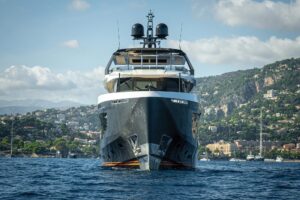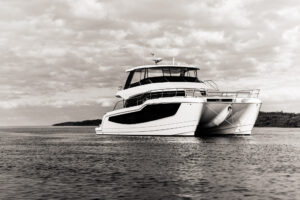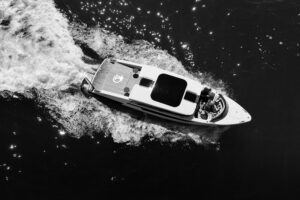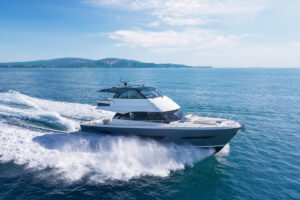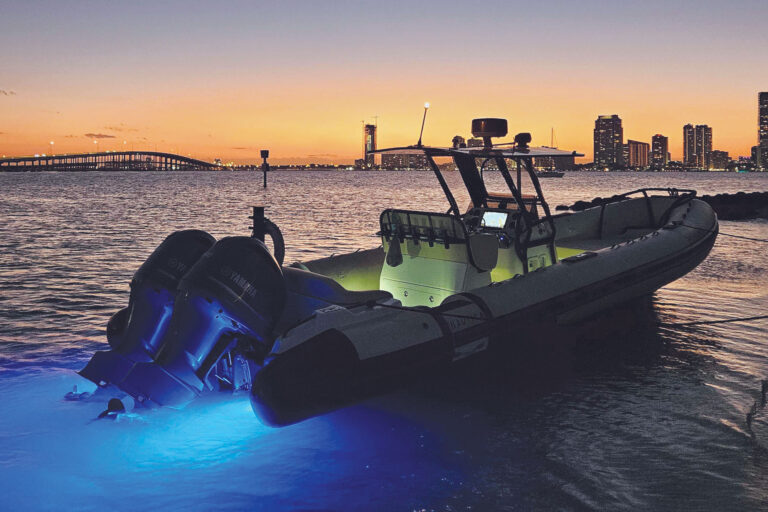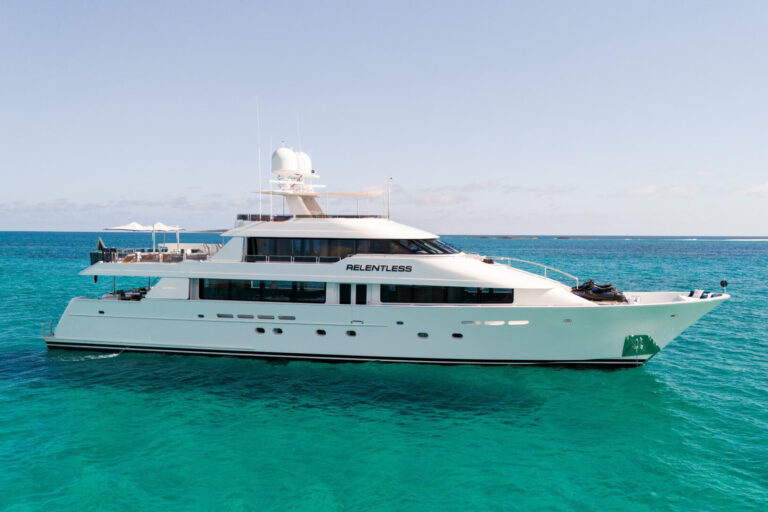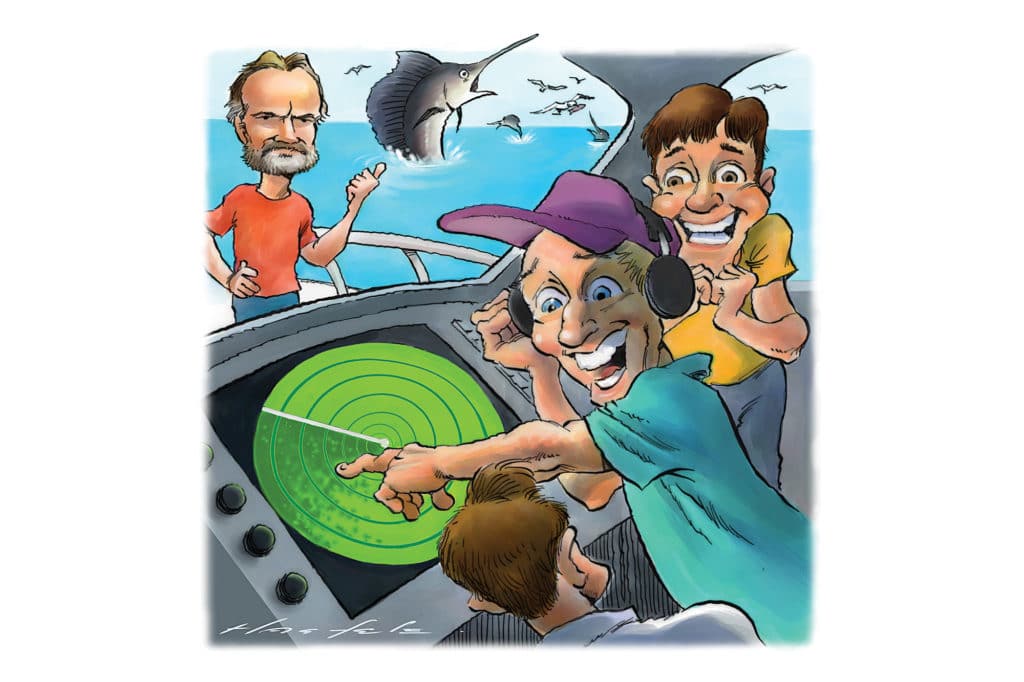
“There’s no more sport in ‘sport fishing,’” Capt. Tom grumbled. He’d learned to chase billfish in the cockpit of his dad’s charter boat in the 1960s. He’s the best fisherman I know.
“Pop would be disgusted,” Tom said. “Captains are hunting billfish like enemy submarines. You don’t need a $100,000 scanning sonar to find fish.”
The technology Tom was referring to is not the recreational-grade gear you find on a bass boat. Originally noodled to battle the U-boat threat in World War II, scanning sonar is common on large commercial-fishing vessels today. Lately, Tom’s been seeing more and more applications on high-end tournament fishboats.
I encountered the equipment and a like-minded skipper when I was a designer years back. The client was a can-do sort of fellow keen on rocking the fishboat world with a high-tech 70-footer that watermen of the day viewed as a Buck Rogers-Rube Goldberg mashup. In addition to its unique styling, it had automated outriggers, a telescoping bridge roof, hot-rodded diesels and an electronics budget that would have subjected NASA to a congressional hearing.
An early adopter, the client wanted technology that was new to yachting. So, when a row erupted between the electronics salesman and interior decorator, it was a TKO. The latest in retractable scanning sonar was in, and a guest head was out.
Read More from Jay Coyle: Tell Tales
While the client attempted to revive the decorator, I was assigned the task of sharing the good news with the reluctant old-school skipper the owner had recruited. Capt. Al was a fishing legend, cut from the same fine timber as my pal Tom’s dad. At Al’s insistence, I’d spent a morning fishing aboard his classic wooden charter boat, where he asked me to join him in his office (the bridge). He was a soft-spoken and polite man who’d fished more years than I’d been on the planet. While his exact words escape me, he made it clear that he didn’t think much of his would-be boss’s new dream boat.
Other than a vintage radio, the only technology I recall seeing in Al’s office was a tachometer and an oil-pressure gauge. He said he had no use for a fish finder because he was the fish finder. Like Tom and his dad, Al relied on his senses, searching for currents, upwellings and color changes. He followed birds to the bait, and the bait to the billfish. Al didn’t want the boss looking over his shoulder “on TV” at fish he wasn’t catching.
Fortunately, Al never took the helm of the new boat and continued to fish as he always had—successfully. But much has changed in the past 40 years, and Tom tells me that tournament types are now shelling out big bucks for the war effort. For them, it’s more about winning than fishing.
One thing hasn’t changed, as Tom says: “You don’t need sonar if you know what to look for.”

